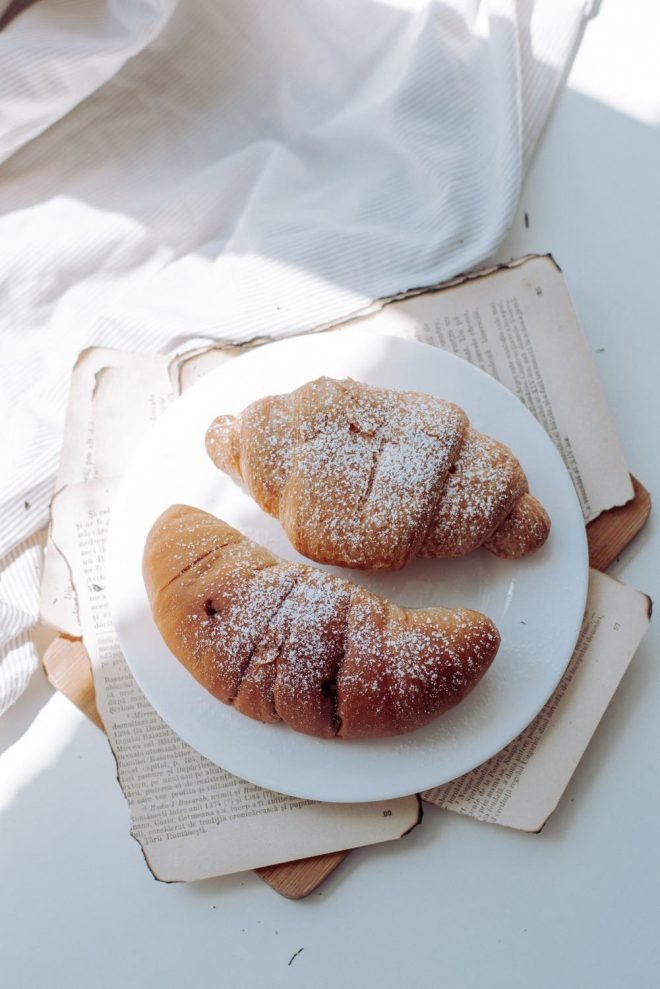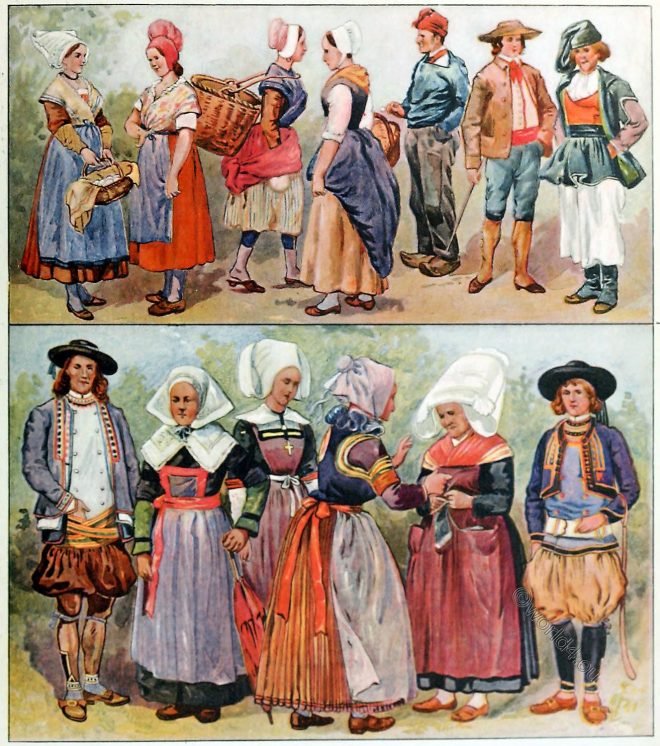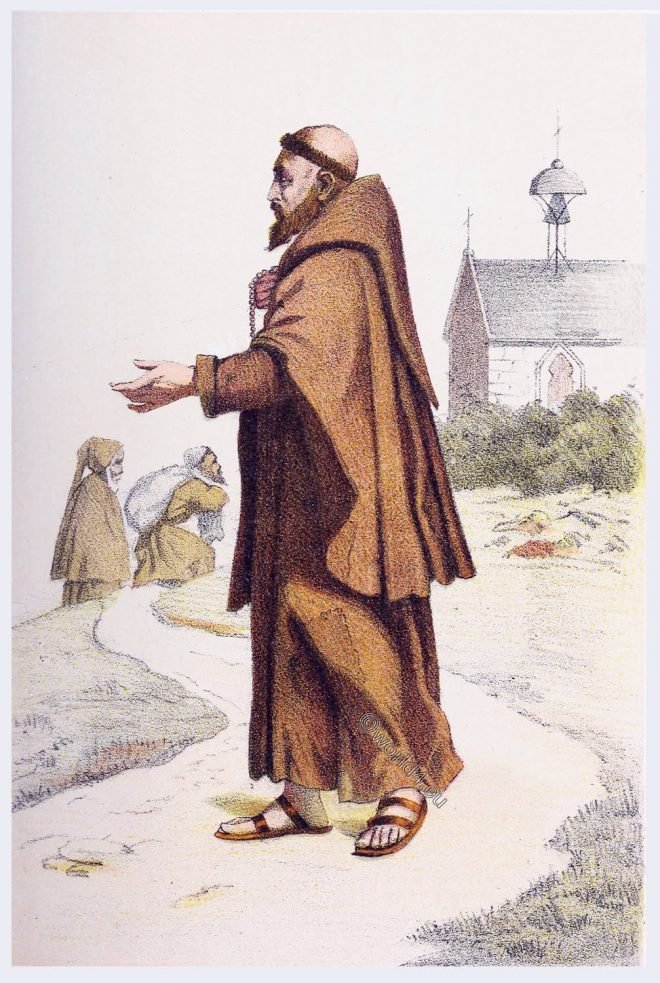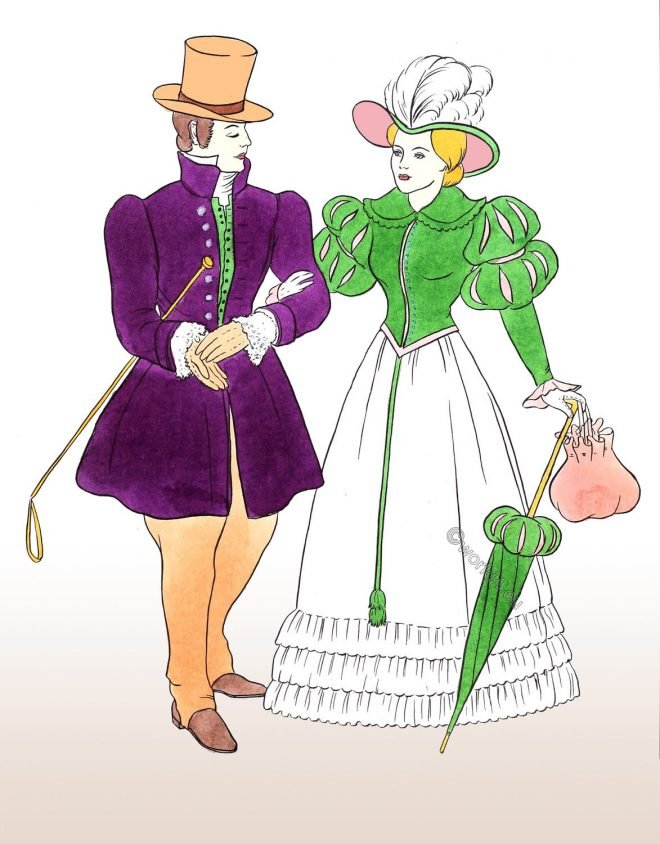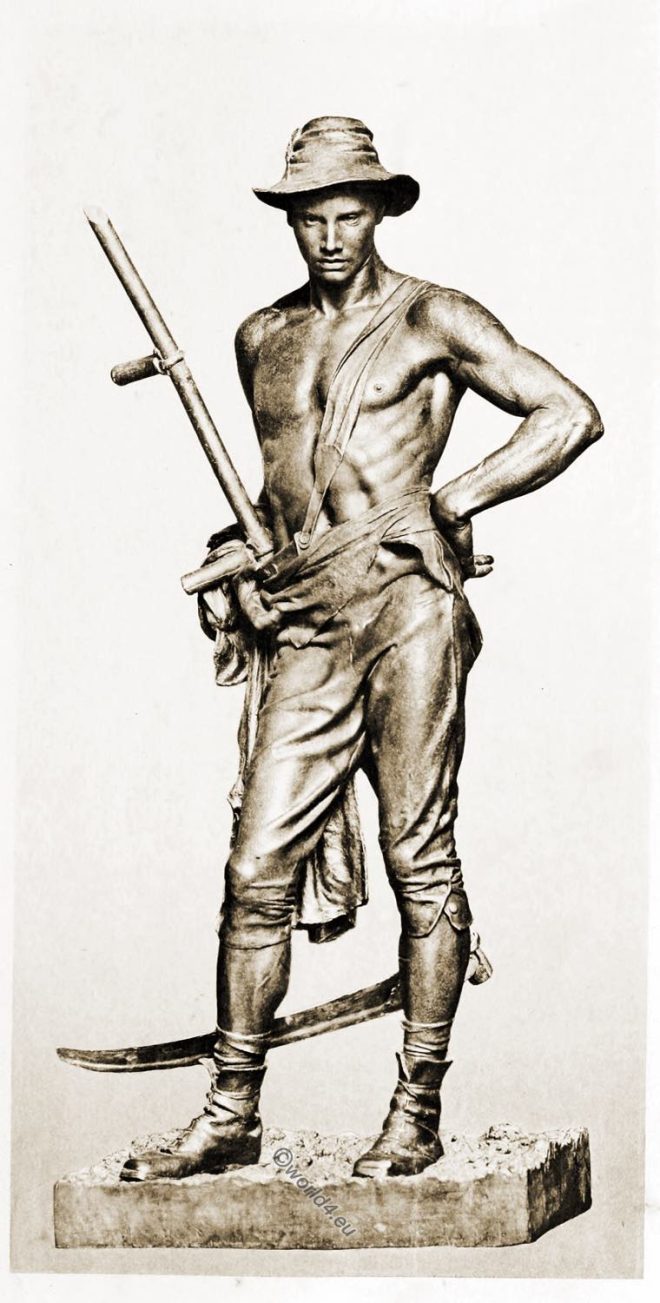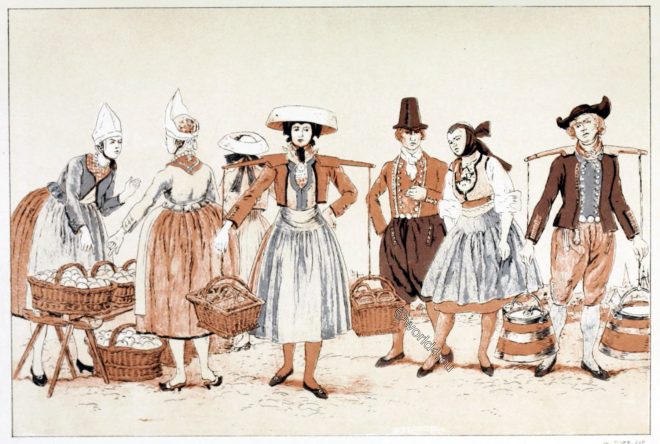The Swedish farmhouse, the so-called Ryggastuga, is a small, simple dwelling house with a grass roof. Interior and household goods.
Category: Europe
Fashions in Europe. European Costume and Cultural History.
Anglo Saxon ornaments. Fibula, Pendant, Pin and Buckle.
Fibula of gold and bronze. Pendant or bulla of gold. Pin and Buckle of of bronze. Discovered at Wingham, near Canterbury, in 1843.
The origin of Croissants. The vanished pomps of yesterday.
When Marie Antoinette married Louis XVI of France, she missed her Kipfel, and sent to Vienna for an Austrian baker to teach his Paris confreres the art of making them.
Folk costumes from the different regions of France. 19th Century.
French Folk costumes from Brittany, Normandy, Bourgogne-Franche-Comté, Provence, Hauts-de-France region, Haute-Savoie, Corsica.
Exterior view of the Treasury of Atreus, Mycenae, Greece.
A space of twenty feet in breadth, between two parallel walls, leads to the Treasury of Atreus.
The Capuchins. Habit of Capuchin Friars. The spread of the Order.
The Capuchins. Mathew de Bassi. Louis of Fossembrone. Exterior Persecutuins. Internal Troubles. Bernardine Ochino. Spread of the Order. Illustrious Members. Missions in America.
A splendid example of the late 1820’s fashion. Romantic period.
The hand bag and parasol illustrate two of the most common accessories of the 19th century.
The Mower by Sir William Hamo Thornycroft. Italian model Orazio Cervi.
The Mower (1888) by Sir W. H. Thornycroft is apparently the first portrayal in British sculpture of a labourer in his working clothes.
Folk costumes from Hamburg and its surroundings.
Fruit seller from the Alte Lande. Vierlander men’s costume. Vierlander woman in dance attire. Milkman from the Hamburg area.
Empire Romantic period. Formal evening wear. Party dress.
The party dress here shows definite leanings toward the Romantic period, which began with 1815.



